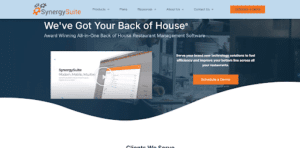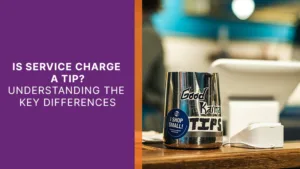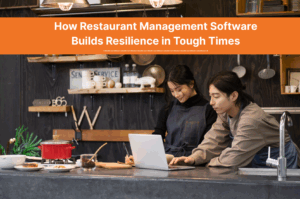So you’re thinking about getting into the restaurant business. Or maybe you’re already in it and you’re either trying to get your restaurant to take off or improve the way an established restaurant runs. You probably have a lot of questions and wrestle with a lot of uncertainties.
And why wouldn’t you? Running a successful restaurant is a very different operation than preparing a meal in your home kitchen. In the kitchen itself, you’ve probably got multiple line chefs preparing all kinds of different dishes in a short amount of time. Outside of the kitchen, you’ve got a whole other set of dishes to keep organized. Managing staff, making sure your diners are content, overseeing inventory and purchasing, keeping the place clean and orderly.
One thing you do know for sure is that a restaurant is a complex machine with a lot of moving parts that you have to keep an eye on. We’ve got a few restaurant management tips that we think might help you make your restaurant run more smoothly, efficiently, and profitably.
Restaurant management 101
We mentioned above that a restaurant is like a complex machine. While that is true, don’t be intimidated. A complex machine is a lot of simpler machines working in unison. Understanding the simple machines makes understanding and managing the complex machine much simpler. If you’re wondering how to run a restaurant, think of it as a lot of small systems that can be understood and managed. Here are some of those systems and a few ideas on how you can better understand and oversee them.
Managing staff
One of the first and most important duties of the restaurant manager/owner is supervising your staff. Hiring, firing, training, promotions, payroll, time off, these are just a few of the things that the diligent restaurant manager needs to handle. Even if you have a very small operation, you probably have at least one or two part-time employees. Good human resources management is crucial! This simply cannot be overstated.
Hiring
When you hire a staff member, you’re entrusting them with some aspect of your operation but unlike you, they may not have a vested interest in the long-term fortunes of your restaurant.

It’s your staff that will interact with your customers most of the time. It’s your staff that will prepare most of the food that they eat. These are crucial customer experiences that need to be taken seriously and employees with those responsibilities need to be trained, motivated, and feel happy in their jobs. The restaurant industry has a notoriously high turnover rate. In the last few years, this has been complicated by the fact that finding anybody to hire at all can be a challenge (see this blog post on restaurant staffing shortage for more on that). Making good hiring decisions is more important than ever.
When making hiring decisions, before you even post an opening, first make sure you know exactly what you’re hiring somebody to do. Develop a good idea of what a “day in the life of my new (insert position)” will be. If you aren’t already, maybe take the time to actually do this job for a day or two. This will enable you to better understand what a good candidate will be like. It will also provide valuable insight for the next point.
Investing in your people
We get it. There’s a high turnover rate in this industry. It may be tempting to see your employees as temporary and treat them as such. Resist the temptation to do so! Even if your employees are high school or college students who will probably move on in a couple of years, take the time to invest in them.
Train them in every aspect of their current job and train them in other functions. When they’re ready, entrust them with additional responsibilities. Treat them with respect and consideration. Employees can usually tell when their employer doesn’t respect or care about them and they’ll usually adjust their attitudes accordingly. Have an open-door policy and make sure your employees know they can come to you with any issues or challenges they’re facing.
Margins are tight and the money for pay raises, bonuses, and other benefits may be scarce, but try to come up with some kind of incentive system to reward the top performers.
When your employees are happy at work, it’s going to be much easier and quite natural for them to create a happy experience for your customers. People like happy people and a happy, enthusiastic, knowledgeable host, waiter, bartender, or barista will create a good impression and experience for your customers.
To help you with this, we have software that can make HR and scheduling easier so you have more time to dedicate to coaching and supporting your staff instead of poring over paper schedules and employee availability matrices.
Bottom line—when thinking about how to manage a restaurant, think about the job functions of every employee, figure out the best way to do that job, and then train your employees on how to carry out the needed responsibilities for specific roles.
Your Stuff
As you well know, a lot of work and material goes into meal preparation and production. You need the ingredients, you also need the facilities to store the ingredients, you need the kitchen tools to prepare the food, you need plates and utensils and, of course, you need the building or truck or cart that you serve it from.
Every single one of these inputs incurs costs and can tie up working capital so it is very important to manage it effectively.
Inventory
Keep a close eye on your inventory and keep only as much on hand as you need. Too few ingredients and you risk running out. However, unlike other businesses that sometimes buy too much inventory of durable goods that can sit for weeks, months or even years and still be usable, excess food in your refrigerators or pantries will eventually spoil. Your food investment will rot away if you buy too much inventory.
To keep inventory in check, consider keeping a very simple menu. Having a few signature dishes that can only be found at your restaurant alongside some more common staples will make the customer experience better by not overloading them with options and it will make it much easier for you to manage your inventory by not having to have too many different ingredients on hand.
Keeping track of your most popular dishes can help you know what and how much you should have on hand. We have software solutions that can help with this!
Facilities
Ask any good mechanic and they’ll tell you that a lot of expensive car repairs can be avoided by routine maintenance. The same goes for virtually every machine and structure. Make sure that your facilities and the tools inside of them are clean and well-maintained. All machines will break down over time but you can extend the life of the ones in your restaurant by making sure they’re kept in good working order.
Also, make sure that you and your staff know the best and most appropriate uses for your various tools and machines. Using something outside of manufacturer specifications may produce results at the cost of reducing its life expectancy.
Bottom line: when thinking about how to run a restaurant, keep a close eye on your inventory to make sure you have only what you need and keep your tools and facilities in top-notch condition through routine maintenance.
Data
Even the most humble eatery produces a lot of useful data. Capturing this data, analyzing it, and using it to inform your decisions can help you to run your restaurant more efficiently and help you save money. The possibilities presented by good data collection and analysis are virtually endless. That’s why we have such an extensive suite of software applications.
Get the word out
It doesn’t matter if you make the best pizza, burgers, pasta, or sushi in town if nobody knows who you are or where to find you.
A lot of restaurant business is generated by repeat customers and word of mouth. I.e. your satisfied diners tell their friends, family, and coworkers about your restaurant. It goes without saying that you need to serve up good food but you also need to make sure that your customers are having good experiences at your restaurant. This is why investing in your people is so important!
Another way of getting the word out is through social media. Having a Facebook page, Twitter handle or other social media accounts for your restaurant can be an effective way of spreading the word.
Then, of course, there is good old-fashioned advertising. Placing ads on billboards and in newspapers, or spots on radio and TV. Maybe sending out mass mailers can bring people in. There’s no right way for every restaurant to advertise. You’ll need to experiment a little and see what works for you.
This is where data collection and analytics comes in! Collecting and analyzing data can help you to figure out exactly who to advertise to.
So how do you manage a restaurant effectively?
Every restaurant will be a little different and this list of tips is by no means exhaustive. That said, these pointers can help you establish a firm foundation to work from. We invite you to take a look at our extensive suite of restaurant management software applications. We have a number of tools that will help you manage every aspect of your restaurant.
Best of luck!






